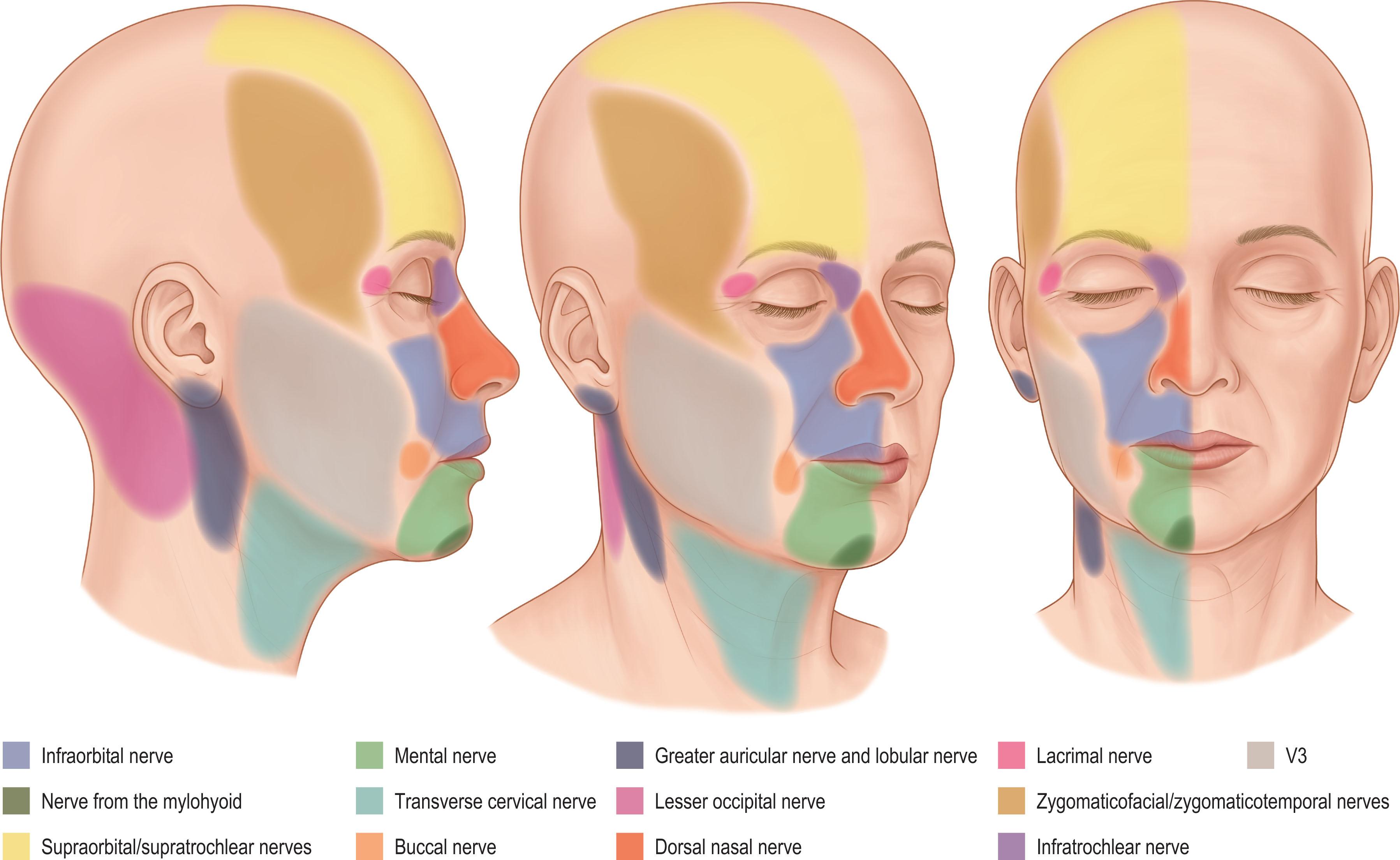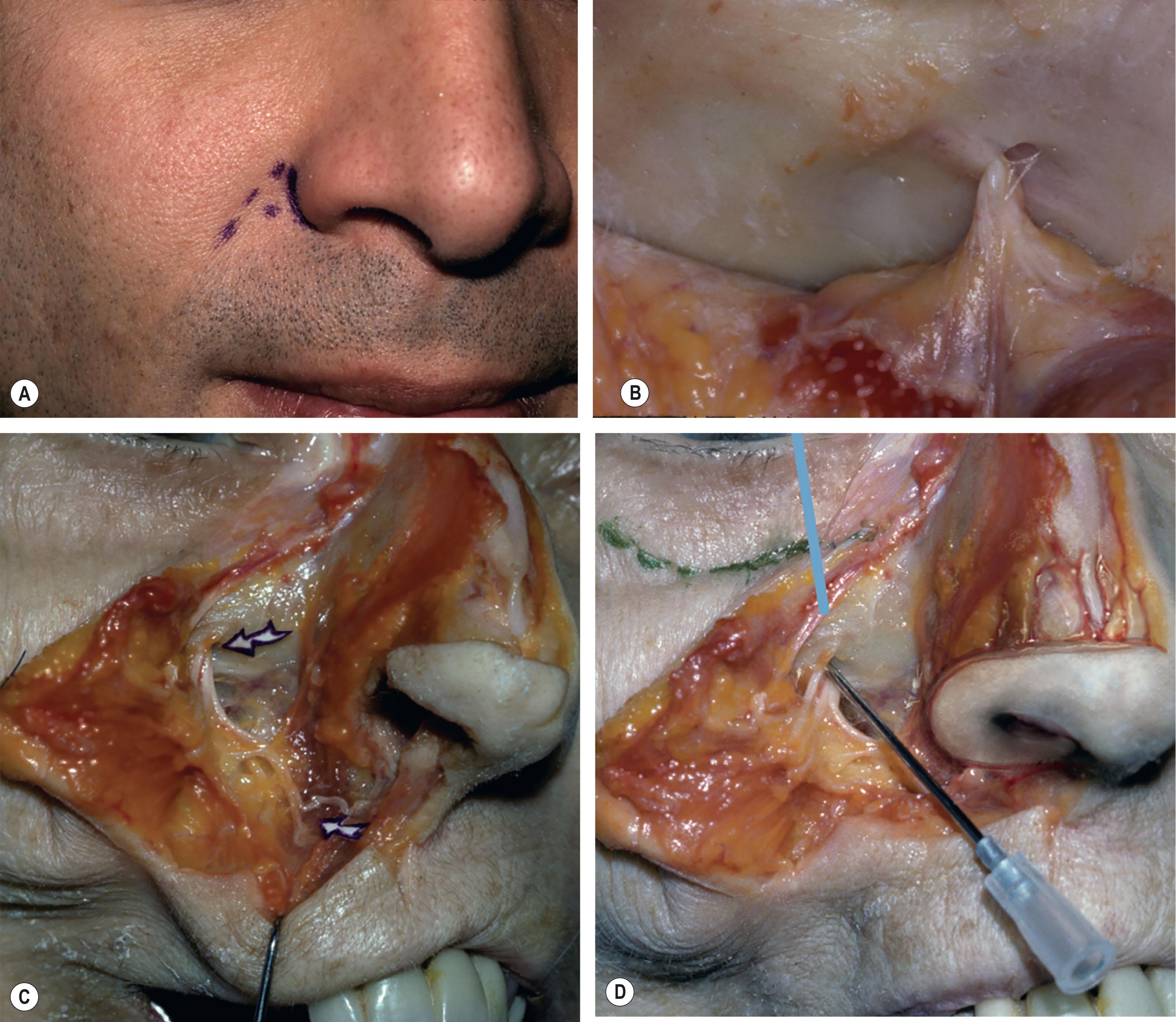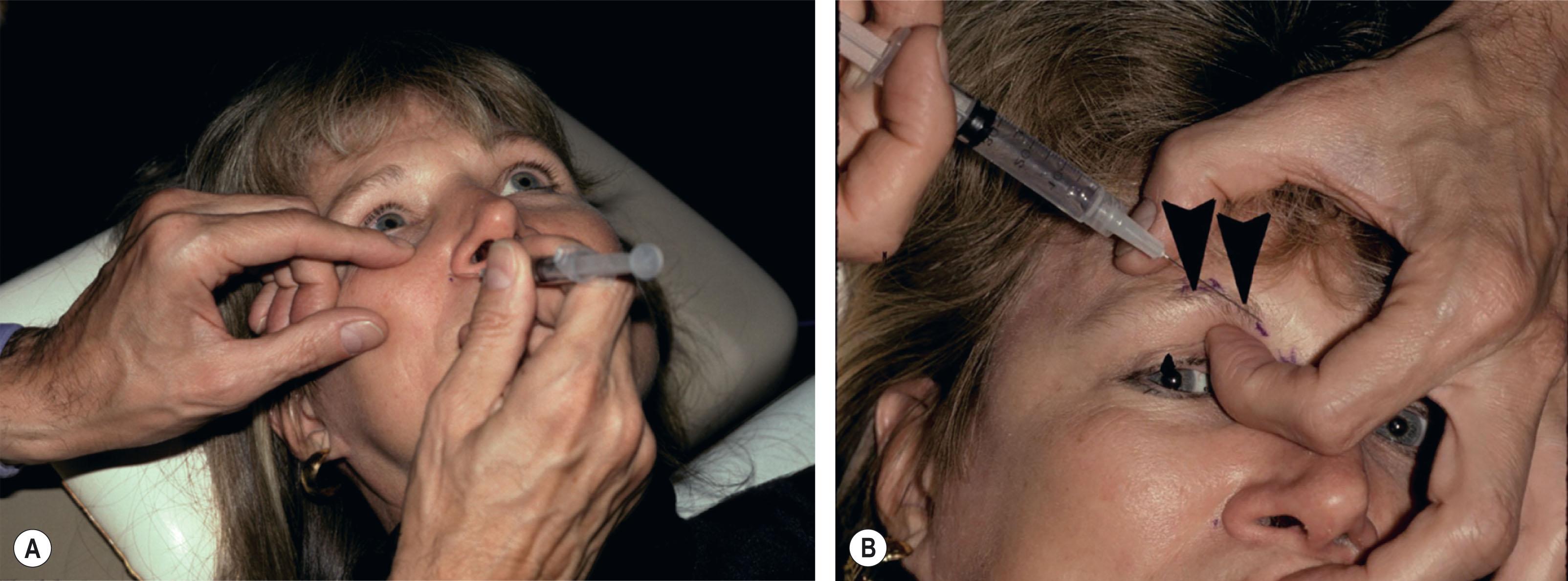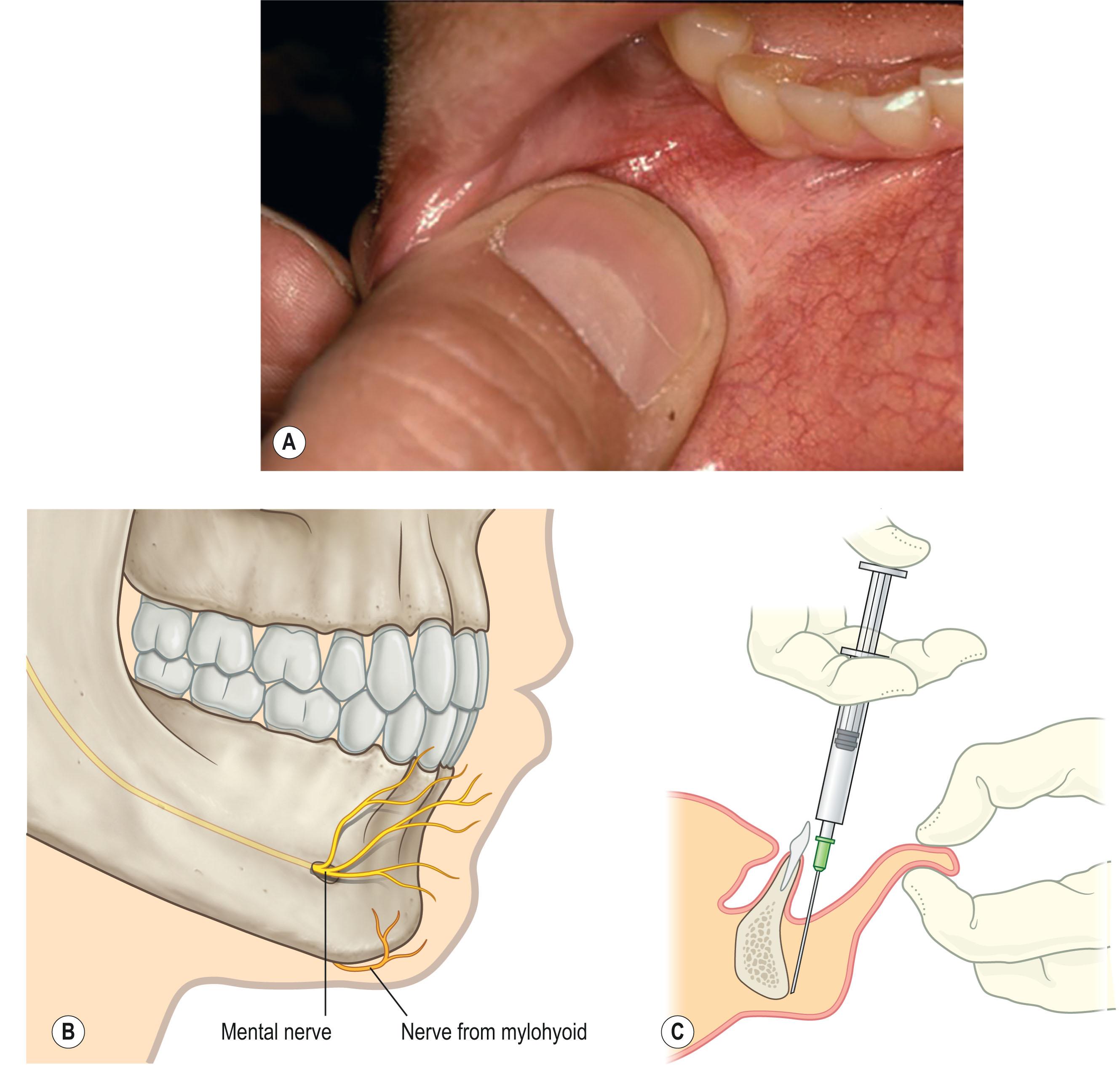Physical Address
304 North Cardinal St.
Dorchester Center, MA 02124
Access video lecture content for this chapter online at Elsevier eBooks+ ![]()
Surgeons who understand the anatomy of nerve blockade will be able to effectively anesthetize large areas of the face safely in a comfortable, reproducible, and expeditious manner. These blocks allow the surgeons to choose noninvasive modalities, office-based treatments, and dermatologic reconstructions without hospital involvement. This is especially important given the increasing trends in the aesthetic market. Being facile at blocks of the face will allow patients to receive fillers, laser treatments, dermabrasions, and chemical peels all while avoiding costly and time-consuming trips to the operating room.
While outside the scope of this chapter, the choice of local anesthesia will depend on specific goals, duration of expected discomfort, patient allergies, and estimated anesthetic volume required. A surgeon need not reflexively use the same anesthetic each time. For instance, lidocaine with epinephrine may be effective in some situations but for an infraorbital block prior to lip fillers, plain lidocaine may be preferred to avoid the extra few hours of anesthesia after the procedure. In addition, there are several well-described modifications to local anesthetics that make the entire process more comfortable. For instance, adding sodium bicarbonate to alkalinize the otherwise acidic local anesthetic reduces injection site pain. Also, local anesthesia is sometimes more easily tolerated if it is warmed. Alternatively, vibration devices have also helped mitigate some of the discomfort associated with the injection of local anesthesia. Furthermore, the use of a small amount of hyaluronidase has been shown to expedite blockade with a small amount of local anesthesia in situations when overfill would obscure tissues. Regardless of the preferred method, surgeons can combine these strategies or others with the content of this chapter to more accurately, efficiently, and reproducibly anesthetize their patients.
The chapter offers the most commonly performed blocks of the face ( Table 5.1 , Fig. 5.1 ). Each section is broken down into anatomy, technique, and distribution of effect.
| Anatomic nerve block | Section in this chapter |
|---|---|
| Infraorbital nerve | 1 |
|
2 |
|
3 |
|
4 |
| Dorsal nasal nerve | 5 |
|
6 |
|
7 |
|
8 |

The infraorbital nerve block has become increasingly more important given the recent popularity of lip injections and perioral rejuvenation. The infraorbital foramen can be found by dropping a line straight down from the medial limbus of the iris. On this line, the foramen is between 5 mm and 8 mm below the orbital rim ( Fig. 5.2 ). Prior to the infraorbital nerve exiting the infraorbital foramen, the superior alveolar nerve branches off; this can occur anywhere from at the level of the foramen to 20 mm prior to the foramen. Depending on a patient’s anatomy and the proximity of the needle to the actual foramen, a patient may describe the feeling of anesthesia to the anterior gingiva and maxillary teeth from the central incisor to, potentially, the ipsilateral bicuspids.

The infraorbital nerve can be blocked through a direct transcutaneous path, an intraoral path from the gingival buccal sulcus, or in the author’s preferred method, through an indirect transcutaneous approach from the isthmus, which is an area between the alar base and start of the nasolabial fold. This preference stems from the fact that, in most patients, the foramen is not completely perpendicular to the face but rather runs in a caudal/medial trajectory from deep to superficial (see Fig. 5.2 ). Through the isthmus approach, the injector can potentially enter the foramen and most precisely block the region of interest and potentially the aforementioned superior alveolar nerve ( Fig. 5.3 ).

To safely block this nerve, the author places the nondominant index finger on the infraorbital rim as a way to protect the globe. With the dominant hand, the author then holds the syringe with an ergonomic pen grip and a small area just lateral to the alar rim is entered and the needle is directed cranial/lateral towards the foramen (see Fig. 5.3 ). Less than 1 cc of the local anesthesia is sufficient if performed successfully. The onset of the block typically takes 3–8 min; during this time, the surgeon can prepare for the treatment.
Using this technique, the area anesthetized is the medial cheek, portions of the nasal sidewall and nasal alar rim, the entire hemi-upper lip from the base of the columella to approximately 1–1.5 cm lateral to the lateral commissure. If the commissure is required, a small infiltrate of local anesthesia in the area will be necessary or a buccal nerve block can be performed (see Section 8 of this chapter). This block is especially valuable for cosmetic injections of the upper lip or cosmetic resurfacing of the upper perioral region as well as skin cancer resection and reconstruction of the medial cheek, upper perioral region, and upper lips.
The mental nerve is also important when performing procedures around the mouth. The mental nerve usually exits from a foramen below the second bicuspid. There is some variability as this nerve can exit up to 1 cm anterior and 1 cm posterior to this point. Fortunately, the nerve can usually be visualized or even palpated by everting the lower lip and directly injected using a small amount of local anesthesia. In addition, the chin pad can partially be innervated from the nerve to the mylohyoid. This nerve branches from the inferior alveolar nerve prior to entering the mandible and can be blocked at the medial mandibular ramus – a strategy commonly employed by dentists and oral surgeons. For most plastic surgeons, the chin can be blocked using the mental nerve plus addition to the mental nerve block, or, by pushing the needle 1 cm further from inside the mouth and blocking any nerve branches that would otherwise pass over the inferior mandibular border in this region.
Depending on the side and the dominant hand of the injector, the mental nerve block can be performed more comfortably by standing above the head of the patient. The mental nerve, or at least the upper fascicles, can be can be both seen and palpated ( Fig. 5.4 ). Thus, the nerve can be blocked at this level or closer to where the nerve exits the mental foramen. Using an intraoral approach, a needle can be inserted several millimeters lateral to the lower canine tooth. Less than 1 cc of local anesthesia can be placed in this region. To account for early fascicle separation, an area 1 cm posterior and 1 cm anterior may also be infiltrated. If blocking the chin pad is required, a mental plus block should be performed at the same time. Specifically, the needle is placed anterior as the sulcus to infiltrate preperiosteal from the midline and just lateral to midline. A total of 2 cc of local anesthesia is generally sufficient for this block.

The mental nerve block can reliably anesthetize the entire lower lip down to the labiomental fold. With the addition of the mental plus block described, the chin pad can be reliably added in a straightforward way regardless of whether the mental nerve or the nerve to the mylohyoid innervates part of the chin pad (see Fig. 5.4 ). This block is valuable for cosmetic injections of the lower lip and chin as well as cosmetic resurfacing of the lower perioral region. This block is also valuable for skin cancer resection and reconstruction of the lower lip, lower perioral region, and chin.
Become a Clinical Tree membership for Full access and enjoy Unlimited articles
If you are a member. Log in here